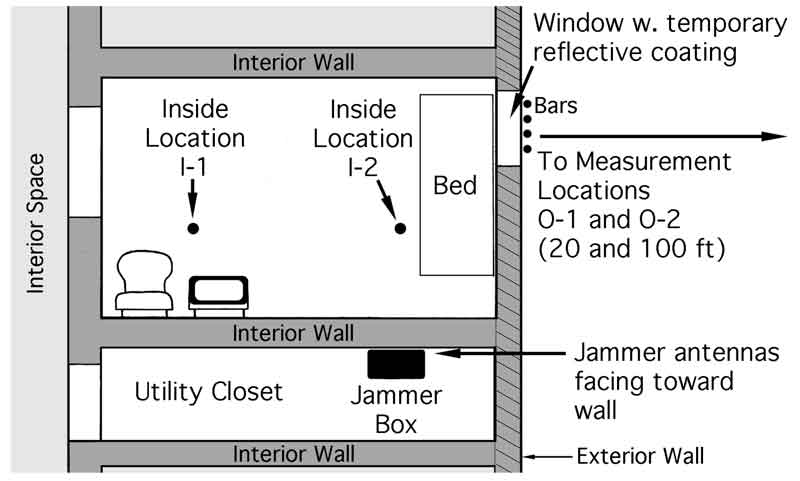
The National Telecommunications and Information Administration (NTIA) has posted a detailed report of its findings from the Jan. 17, 2018 test of micro-jamming technology conducted at the Federal Correctional Institution (FCI) at Cumberland, Maryland.
The relatively low-power, micro-jamming prototype device was used to demonstrate whether it could effectively disrupt wireless service in four radio spectrum bands utilized by Commercial Mobile Radio Services (CMRS).
This demonstration occurred at the Department of Justice (DOJ) Bureau of Prisons (BOP) medium-security FCI at Cumberland, Maryland.
NTIA assisted BOP and the manufacturer with site selection within the facility, but did not participate in the jammer installation or operation.
The micro-jammer prototype device was designed by the manufacturer to operate at a relatively low power level so as to effectively disrupt communications from and to contraband wireless devices in a small (prison cell-sized) area indoors while not affecting other CMRS operations outdoors, outside the zone of intentional jamming.

cell, and measurement antenna locations. Wall, door, and window thicknesses, positions and
dimensions are only approximate. (Courtesy of the The National Telecommunications and Information Administration (NTIA))
Data from the test show that the micro-jammer’s signal disrupted commercial wireless signals inside the prison cell, which meant that if cellphones were operating inside the cell, they would have been rendered inoperable.
At 20 ft. and 100 ft. outside the cell, however, the micro-jammer signals did not disrupt the commercial wireless signals.
Department officials present during the January 17, 2018, test reported that while their cellphone signals were blocked inside the cell, their cellphones were operable when standing several feet from the cell’s window.

“These promising test results mark a step forward countering the security threat posed by contraband cellphones,” said Assistant Attorney General Beth Williams of the Justice Department’s Office of Legal Policy.
“The results indicate the potential for localized impact of this micro-jamming technology.”
“That is an encouraging sign that brings us closer to a solution that will make our communities safer and help prevent the continuation of criminal activity from inside prison walls.”
The data in the report will be used by BOP and the Department to understand the efficacy of micro-jamming, conduct further evaluation of jamming technology, and develop recommendations for strategic planning.
Contraband cellphones have been an ongoing correctional security and public safety concern for the BOP as well as for state and local correctional institutions.
(See more. Citing recent cases, local officials say escapes where inmates receive cell phone via drones are possible because federal authorities won’t let them jam cell phone signals in state prisons. Courtesy of NBC News and YouTube. Posted on Jul 10, 2017.)
Across the country, contraband cellphones have been used by inmates to direct gang activity, run criminal enterprises, distribute child pornography, intimidate witnesses, and facilitate the commission of violent crimes.
“This test is just one part of our ongoing efforts to disrupt and disable dangerous contraband cellphones in federal and state prisons,” said Assistant Attorney General Williams.
(Learn More. Smuggling dangerous items into prison is a common practice. Courtesy of CNN and YouTube. Posted on Jun 17, 2015.)
The BOP will continue to evaluate cellphone detection and interdiction technologies and work with its federal partners and Congress to achieve cost-effective options to combat this threat to corrections and public safety.
The agency does not endorse any specific vendor or product.
NTIA’s complete report is available for viewing at: https://www.its.bldrdoc.gov/publications/3206.aspx
Learn More…
Cellbusters: Detect Cell Phones to Save Lives (Learn More, Multi-Video)















